The Prince George’s Hall of Fame was established in 1975 to recognize superior achievement, extraordinary creativity and natural talent of distinguished Prince Georgians of the past.
Although created by the Prince George’s Chamber of Commerce, with approval of the Prince George’s County Council, the Hall of Fame is an autonomous organization. Its mission is to educate the public about outstanding men and women of achievement, who were born in, or lived in Prince George’s County. By honoring these outstanding individuals, the hall of Fame hopes that County residents will be encouraged to emulate their achievement.
The Hall of Fame honors these individuals by commissioning portraits of them that are then displayed in public buildings in the County. This brochure reproduces some of these portraits and gives a brief history of each person honored.
The Hall of Fame is supported solely by contributions, all of which are tax deductible, and go toward the commissioning of portraits of the inductees, and also toward public education. Donations may be directed to the Hall of Fame, P.O. Box 1513, Upper Marlboro, MD 20773.
INDUCTEES (Listed Alphabetically)
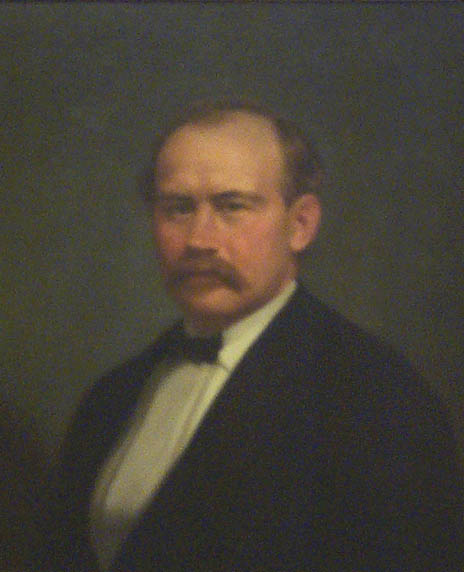 Oden Bowie was born in 1826 at Fairview, the Prince George’s County plantation of his father, William Duckett Bowie. After a heroic record in the Mexican War, he was elected to the Maryland House of Delegates, and then served as state senator. He was elected Governor of Maryland and served from 1869 to 1872. After his term as governor, Bowie resided at Fairview, devoting his time to agriculture and the breeding of thoroughbred horses. He was one of the founders of Pimlico Race Course. Bowie also was instrumental in the establishment of the Baltimore and Potomac Railroad through Prince George’s County. The junction of this line with the spur line into Washington still bears his name. Governor Bowie died in 1894 and is buried at Fairview.
Oden Bowie was born in 1826 at Fairview, the Prince George’s County plantation of his father, William Duckett Bowie. After a heroic record in the Mexican War, he was elected to the Maryland House of Delegates, and then served as state senator. He was elected Governor of Maryland and served from 1869 to 1872. After his term as governor, Bowie resided at Fairview, devoting his time to agriculture and the breeding of thoroughbred horses. He was one of the founders of Pimlico Race Course. Bowie also was instrumental in the establishment of the Baltimore and Potomac Railroad through Prince George’s County. The junction of this line with the spur line into Washington still bears his name. Governor Bowie died in 1894 and is buried at Fairview.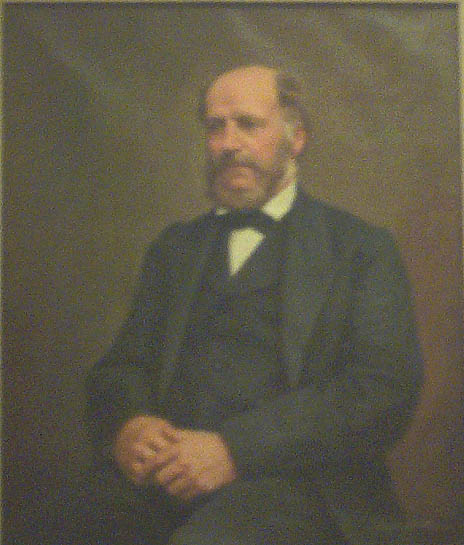 Charles Benedict Calvert was born in August, 1808, at Riversdale, the plantation of his parents, George and Rosalie Stier Calvert. A dedicated and progressive agriculturalist, he was instrumental in the formation of the Prince George’s County Agricultural Society, the Maryland State Agricultural Society and the United States Agricultural Society. Calvert was the prime mover in the establishment of the Maryland Agricultural College, now the University of Maryland at College Park. He served three terms in the Maryland House of Delegates and, in 1861, was elected to the United States House of Representatives. During his term, he aggressively worked for the establishment of a federal Department of Agriculture, a goal that was realized after his death. Calvert died at Riversdale in May, 1864.
Charles Benedict Calvert was born in August, 1808, at Riversdale, the plantation of his parents, George and Rosalie Stier Calvert. A dedicated and progressive agriculturalist, he was instrumental in the formation of the Prince George’s County Agricultural Society, the Maryland State Agricultural Society and the United States Agricultural Society. Calvert was the prime mover in the establishment of the Maryland Agricultural College, now the University of Maryland at College Park. He served three terms in the Maryland House of Delegates and, in 1861, was elected to the United States House of Representatives. During his term, he aggressively worked for the establishment of a federal Department of Agriculture, a goal that was realized after his death. Calvert died at Riversdale in May, 1864.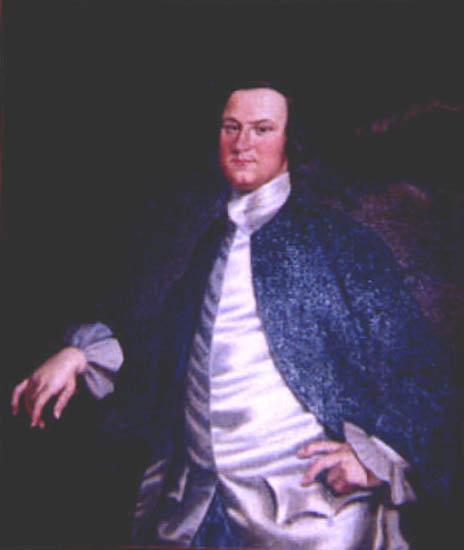 Daniel Carroll was born in Upper Marlboro in July, 1730. He was the brother of John Carroll, who became the first Catholic archbishop in America. Carroll was appointed to the Executive Council of Maryland in 1777 and served in the state senate from 1781 to 1791. For two years, he was a delegate to the Continental Congress, and was a signer of the Articles of Confederation. A federalist favoring string central government, he acted as a delegate to the Constitutional Convention in 1787 and diligently supported Maryland’s ratification of the United States Constitution the next year. He was elected Representative to the first United States Congress. Having been appointed by Washington in 1791 as one of the surveyors of the District of Columbia, Carroll also served on the first Board of Commissioners of the District. He died at Rock Creek, Montgomery County, in May, 1796.
Daniel Carroll was born in Upper Marlboro in July, 1730. He was the brother of John Carroll, who became the first Catholic archbishop in America. Carroll was appointed to the Executive Council of Maryland in 1777 and served in the state senate from 1781 to 1791. For two years, he was a delegate to the Continental Congress, and was a signer of the Articles of Confederation. A federalist favoring string central government, he acted as a delegate to the Constitutional Convention in 1787 and diligently supported Maryland’s ratification of the United States Constitution the next year. He was elected Representative to the first United States Congress. Having been appointed by Washington in 1791 as one of the surveyors of the District of Columbia, Carroll also served on the first Board of Commissioners of the District. He died at Rock Creek, Montgomery County, in May, 1796.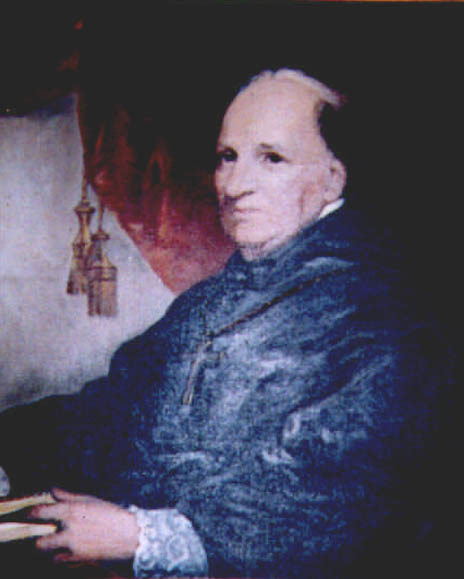 John Carroll was born to Daniel and Eleanor Carroll in Upper Marlboro in January, 1735. Noted mainly for his role in the formation of the Roman Catholic Church in America, he also is remembered for his journey to Canada in 1776 for the purpose of persuading Canada to unite with the thirteen colonies in the Revolution. In 1789, Carroll was nominated by representatives of the American Catholic clergy to be the first bishop of the Roman Catholic Church in America. His nomination was confirmed by the Vatican in 1790. In the same year, he founded Georgetown College, known today as Georgetown University. In 1803, Carroll was elevated to the level of archbishop, this making him the first archbishop of the Roman Catholic Church in America. He died in December, 1815, in Georgetown.
John Carroll was born to Daniel and Eleanor Carroll in Upper Marlboro in January, 1735. Noted mainly for his role in the formation of the Roman Catholic Church in America, he also is remembered for his journey to Canada in 1776 for the purpose of persuading Canada to unite with the thirteen colonies in the Revolution. In 1789, Carroll was nominated by representatives of the American Catholic clergy to be the first bishop of the Roman Catholic Church in America. His nomination was confirmed by the Vatican in 1790. In the same year, he founded Georgetown College, known today as Georgetown University. In 1803, Carroll was elevated to the level of archbishop, this making him the first archbishop of the Roman Catholic Church in America. He died in December, 1815, in Georgetown.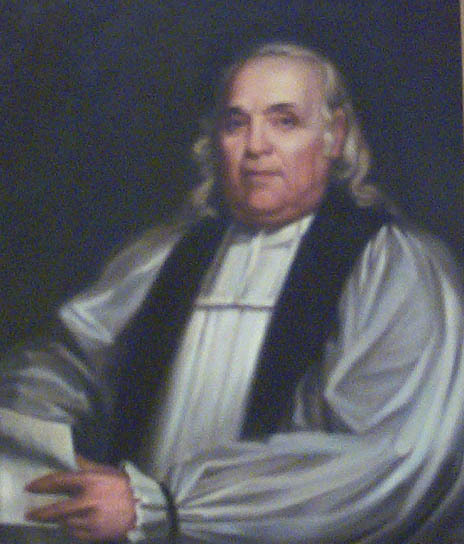 Thomas John Claggett, the first to use the double “g” in spelling his family’s name, was born in October, 1743, near Nottingham in Prince George’s County. He graduated from Princeton University in 1764. In 1792, at Trinity Church in New York City, he became the first Episcopal bishop of Maryland and was the first bishop of that faith consecrated in America. Bishop Claggett was appointed Chaplain of the United States Senate in 1800 and, in 1810, he founded Trinity Episcopal Church in Upper Marlboro. He died at his home near Croom in August 1816. In 1898, Bishop Claggett was re-interred at the National Cathedral. A memorial marker was erected on the grounds of his home church, St. Thomas, Croom, in 1932.
Thomas John Claggett, the first to use the double “g” in spelling his family’s name, was born in October, 1743, near Nottingham in Prince George’s County. He graduated from Princeton University in 1764. In 1792, at Trinity Church in New York City, he became the first Episcopal bishop of Maryland and was the first bishop of that faith consecrated in America. Bishop Claggett was appointed Chaplain of the United States Senate in 1800 and, in 1810, he founded Trinity Episcopal Church in Upper Marlboro. He died at his home near Croom in August 1816. In 1898, Bishop Claggett was re-interred at the National Cathedral. A memorial marker was erected on the grounds of his home church, St. Thomas, Croom, in 1932.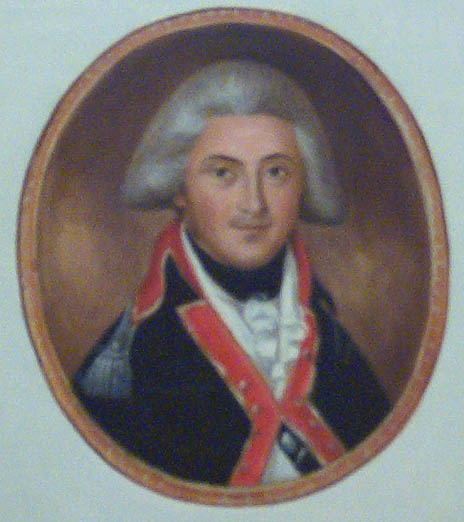 Leonard Covington was born near Aquasco 30 October 1768. Commissioned by President Washington in 1792, he served three years in the Ohio Indian campaigns under General Anthony Wayne. Returning to his Prince George’s County plantation, Covington Farm, he was elected to the ninth United States Congress in 1804, and appointed to fill a vacancy in the Maryland Senate in 1807. In 1809 he entered military service again and served various posts through the South. General Covington was transferred to the northern theatre during the War of 1812, and participated in the American expedition to capture Montreal. He was wounded and died 13 November 1813 at French Mills (now named Fort Covington in his honor), New York.
Leonard Covington was born near Aquasco 30 October 1768. Commissioned by President Washington in 1792, he served three years in the Ohio Indian campaigns under General Anthony Wayne. Returning to his Prince George’s County plantation, Covington Farm, he was elected to the ninth United States Congress in 1804, and appointed to fill a vacancy in the Maryland Senate in 1807. In 1809 he entered military service again and served various posts through the South. General Covington was transferred to the northern theatre during the War of 1812, and participated in the American expedition to capture Montreal. He was wounded and died 13 November 1813 at French Mills (now named Fort Covington in his honor), New York.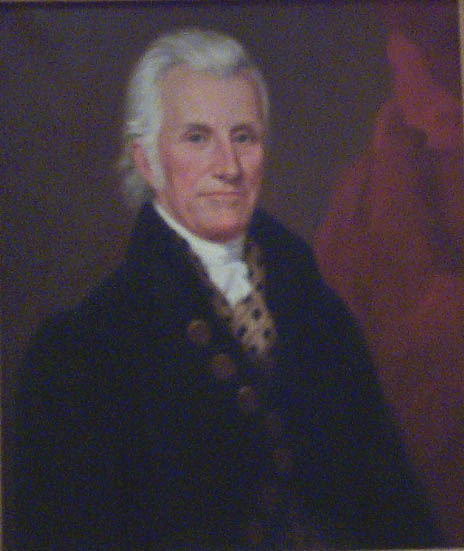 Gabriel Duvall was born on his father’s plantation, a part of “Darnall’s Grove,” in December, 1752. He began his public career, which spanned more than sixty years, as a clerk of the General Court in Annapolis in 1771, resigning in 1778 to practice law. In the following years, in addition to representing many clients in court, Duvall served as prosecuting attorney in Annapolis, a member of the Governor’s Council and won a seat in the Maryland House of Delegates representing Annapolis. In 1794, he was selected to fill a vacant seat in the Third United States Congress. Appointed Comptroller of the Treasury by President Jefferson, whom he supported as an elector in 1796 and 1800, he held that post from 1802 until 1811. At that time, he was named an Associate Justice of the Supreme Court by President Madison, Duvall stepped down from the bench in 1835 and retired to his beloved farm, “Marietta” where he died in March, 1844.
Gabriel Duvall was born on his father’s plantation, a part of “Darnall’s Grove,” in December, 1752. He began his public career, which spanned more than sixty years, as a clerk of the General Court in Annapolis in 1771, resigning in 1778 to practice law. In the following years, in addition to representing many clients in court, Duvall served as prosecuting attorney in Annapolis, a member of the Governor’s Council and won a seat in the Maryland House of Delegates representing Annapolis. In 1794, he was selected to fill a vacant seat in the Third United States Congress. Appointed Comptroller of the Treasury by President Jefferson, whom he supported as an elector in 1796 and 1800, he held that post from 1802 until 1811. At that time, he was named an Associate Justice of the Supreme Court by President Madison, Duvall stepped down from the bench in 1835 and retired to his beloved farm, “Marietta” where he died in March, 1844.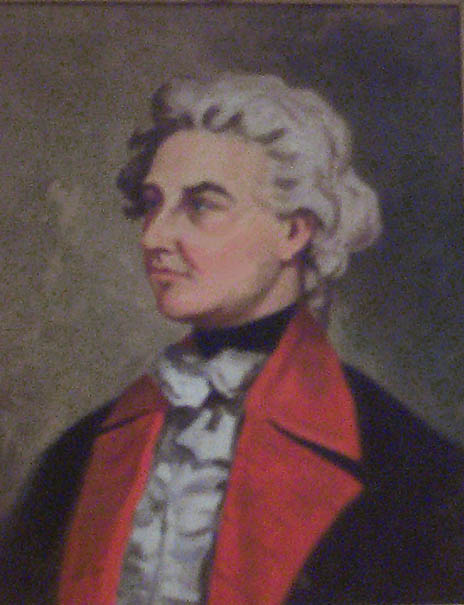 Pierre Charles L’Enfant was born in Paris France, in August, 1754. He studied art at the Academie Royale de Peinture et de Sculpture and, in 1776, enlisted as a volunteer in the American Revolutionary Army. In recognition of his service, Congress promoted him to major of engineers in 1783. After the war, in 1791, President Washington commissioned L’Enfant to prepare a plan for the new Federal City. The resulting plan was a brilliant combination of mall, broad avenues, parks and squares, using to advantage the uneven ground. In his old age, L’Enfant lived with the Digges family at Green Hill, Prince George’s County. It was here that he died in June 1825. In 1909, his body was removed to Arlington National Cemetery where a monument was erected to him by Congress.
Pierre Charles L’Enfant was born in Paris France, in August, 1754. He studied art at the Academie Royale de Peinture et de Sculpture and, in 1776, enlisted as a volunteer in the American Revolutionary Army. In recognition of his service, Congress promoted him to major of engineers in 1783. After the war, in 1791, President Washington commissioned L’Enfant to prepare a plan for the new Federal City. The resulting plan was a brilliant combination of mall, broad avenues, parks and squares, using to advantage the uneven ground. In his old age, L’Enfant lived with the Digges family at Green Hill, Prince George’s County. It was here that he died in June 1825. In 1909, his body was removed to Arlington National Cemetery where a monument was erected to him by Congress.Horace Capron, Jr. was born in Laurel, Maryland. While serving with the 8th Illinois Calvary company G at Chicahominy and Ashland Virginia in June 1862 during the Civil War, he was awarded the medal of honor for “Extreme gallantry in action against the enemy.” picture of gravestone at bottom of another site
Clinton Greaves
Clinton Greaves was born in Virginia but entered service from Prince George’s County at the age of 22 in 1872. He was assigned to the 9th U.S. Calvary (known as the buffalo soldiers) company C. He was a corporal when awarded the Medal of Honor during the Indian Wars in New Mexico on January 24, 1877. Greaves surrounded by renegade Apache Indians in hand-to-hand fighting managed to shoot and bash a gap through the Apaches, permitting his companions to break free. more at another site
Thomas Boyne
Thomas Boyne was born a slave in Prince George’s County in 1846. He enlisted in the U.S. Colored Troops on February 5th 1864 during the Civil War and served in various military units after the war. In 1875 he enlisted as a sergeant in the 9th Calvary during the Indian Wars. He was awarded the Medal of Honor for his role in two engagements in 1879 at Mimbres Mountains and at Cuchillo Negro River near Ojo Caliente both in New Mexico. more at another site
James A. Graham
James A. Graham a graduate of Gwynn Park High School in Brandywine was a Marine captain when he was killed in action in South Vietnam on June 2, 1967. Graham’s Company F, 2nd Battalion, 5th Marines, attacked and enemy occupied position. The company came under intense fire and suffered heavy casualties while crossing a rice paddy. Graham boldly led a fierce assault forcing the enemy to abandon one machine gun thus enabling evacuation of the wounded. Determined to silence the second machine gun, Graham’s force held its position and Graham suffered wounds while killing 15 of the enemy. Knowing he had no chance of survival he chose to stay with one seriously wounded man and was killed in the battle. “His outstanding courage, superb leadership and indomitable fighting spirit undoubtedly saved the second platoon from annihilation” the medal citation said. more at another site
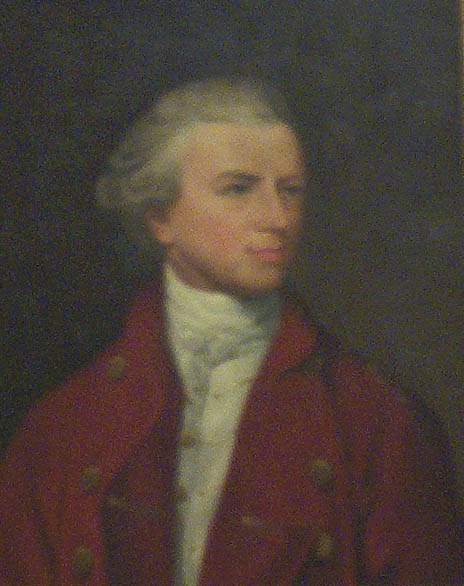 Four Prince Georgians were elected to represent this County at the Ratification Convention held in Annapolis in April 1788. They were George Digges (1742-1792) of Warburton Manor, Fielder Bowie (1745-2794) of Nottingham, Benjamin Hall (1735-1803) Partnership, and Osborn Sprigg (1741-1815) of Northampton. The purpose of the Annapolis Convention was to decide whether or not Maryland would ratify the proposed Constitution of the United States. All four of the Prince George’s County delegates were in attendance the entire nine days of the convention, and all voted in favor of ratification.
Four Prince Georgians were elected to represent this County at the Ratification Convention held in Annapolis in April 1788. They were George Digges (1742-1792) of Warburton Manor, Fielder Bowie (1745-2794) of Nottingham, Benjamin Hall (1735-1803) Partnership, and Osborn Sprigg (1741-1815) of Northampton. The purpose of the Annapolis Convention was to decide whether or not Maryland would ratify the proposed Constitution of the United States. All four of the Prince George’s County delegates were in attendance the entire nine days of the convention, and all voted in favor of ratification.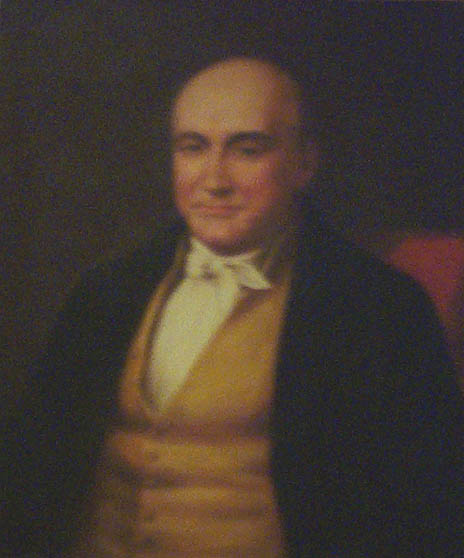 Joseph Kent was born January 1779, in Calvert County, Maryland. He received a liberal education and, at the age of twenty, was licensed to practice medicine. A few years later, he moved to Prince George’s County and established himself at his plantation, which he named Rose Mount. He was elected to Congress in 1810 and served until 1815. While in Congress, he voted for war with England, siding with the young nationalists of the West, rather than the leaders of his own Federalist party. He served a second term in the United States Congress, as a Democrat, from 1819 to 1826. Dr Kent was elected Governor of Maryland in 1826 and remained in office until 1829. He promoted the building of the Chesapeake and Ohio Railroad, advocating both as essential for linking Maryland with the West. In 1832, he was elected to the United States Senate and served until his death at Rose Mount in November, 1837.
Joseph Kent was born January 1779, in Calvert County, Maryland. He received a liberal education and, at the age of twenty, was licensed to practice medicine. A few years later, he moved to Prince George’s County and established himself at his plantation, which he named Rose Mount. He was elected to Congress in 1810 and served until 1815. While in Congress, he voted for war with England, siding with the young nationalists of the West, rather than the leaders of his own Federalist party. He served a second term in the United States Congress, as a Democrat, from 1819 to 1826. Dr Kent was elected Governor of Maryland in 1826 and remained in office until 1829. He promoted the building of the Chesapeake and Ohio Railroad, advocating both as essential for linking Maryland with the West. In 1832, he was elected to the United States Senate and served until his death at Rose Mount in November, 1837. The 1997 induction of two Pioneers of Flight represents Prince George’s County’s role in aviation history, from America’s first unmanned balloon ascent (1784) in Bladensburg to today’s space exploration at Goddard Space Flight Center in Greenbelt. Benjamin Foulois (1879 to 1967) began his career as a lieutenant in the Army Signal Corps, and in 1909 received flight instruction from Wilbur Wright at College Park. He became Brigadier General during the First World War, and in 1931 became Chief of Army Air Corps and Major General. He spent the last 30 years of his life at Andrews Air Force Base, active in his support of military air power. (photo and more at another site) John W. Greene, Jr., (1901-1989) was in 1937 the second American to receive a commercial pilot’s license, and the first African-American to operate an airfield in the United States. In 1944 Greene founded the Columbia Air Center which operated until 1956 near the Patuxent River at Croom, offering primary flight training and civil air patrol training, as well as charter services. These Pioneers of Flight illustrate the County’s unique importance in aviation history. (more at another site)
The 1997 induction of two Pioneers of Flight represents Prince George’s County’s role in aviation history, from America’s first unmanned balloon ascent (1784) in Bladensburg to today’s space exploration at Goddard Space Flight Center in Greenbelt. Benjamin Foulois (1879 to 1967) began his career as a lieutenant in the Army Signal Corps, and in 1909 received flight instruction from Wilbur Wright at College Park. He became Brigadier General during the First World War, and in 1931 became Chief of Army Air Corps and Major General. He spent the last 30 years of his life at Andrews Air Force Base, active in his support of military air power. (photo and more at another site) John W. Greene, Jr., (1901-1989) was in 1937 the second American to receive a commercial pilot’s license, and the first African-American to operate an airfield in the United States. In 1944 Greene founded the Columbia Air Center which operated until 1956 near the Patuxent River at Croom, offering primary flight training and civil air patrol training, as well as charter services. These Pioneers of Flight illustrate the County’s unique importance in aviation history. (more at another site) Thomas George Pratt was born 18 February 1804 in Georgetown. He studied law at Georgetown and Princeton Universities, and in 1823 set up practice in Upper Marlboro where he resided for 25 years. During this time, he served in the Maryland House of Delegates (1832-35, as President of the Executive Council of Maryland (1836), and as a state Senator (1838-45). During the 1840s, Pratt owned and resided in the venerable Marlborough House, a landmark on Main Street in Upper Marlboro. Pratt was elected Governor of Maryland and served from 1845 to 1848. After his term as governor, he served seven years as a United States Senator. He died in Baltimore 9 November 1869.
Thomas George Pratt was born 18 February 1804 in Georgetown. He studied law at Georgetown and Princeton Universities, and in 1823 set up practice in Upper Marlboro where he resided for 25 years. During this time, he served in the Maryland House of Delegates (1832-35, as President of the Executive Council of Maryland (1836), and as a state Senator (1838-45). During the 1840s, Pratt owned and resided in the venerable Marlborough House, a landmark on Main Street in Upper Marlboro. Pratt was elected Governor of Maryland and served from 1845 to 1848. After his term as governor, he served seven years as a United States Senator. He died in Baltimore 9 November 1869.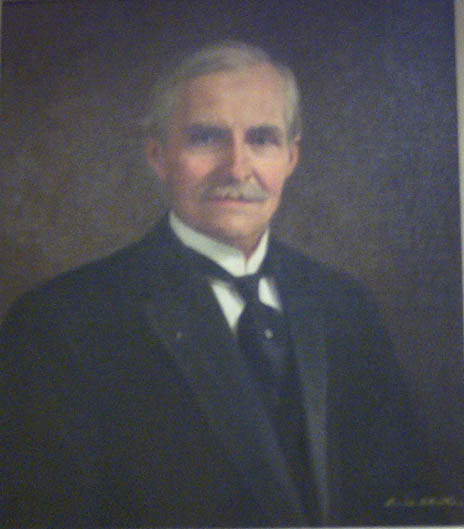 Dr James Harris Rogers was born in Franklin Tennessee, in July, 1850, and received his early education in Europe where, as a youth, he displayed exceptional inventive ingenuity. From 1877, when he came to Price George’s County, until his death in December 1929, he performed extensive experiments in the field of electrical science in the laboratory of his Hyattsville home. About 50 patients were received by Dr. Rogers; one of the most important was for a system of underground and underwater wireless communication, a major aid to the Allied effort during World War I. An honorary Fellow of the Maryland Academy of Sciences, Dr. Rogers received degrees of Doctor of Science from Georgetown University and the University of Maryland in recognition of his lifetime of scientific achievement.
Dr James Harris Rogers was born in Franklin Tennessee, in July, 1850, and received his early education in Europe where, as a youth, he displayed exceptional inventive ingenuity. From 1877, when he came to Price George’s County, until his death in December 1929, he performed extensive experiments in the field of electrical science in the laboratory of his Hyattsville home. About 50 patients were received by Dr. Rogers; one of the most important was for a system of underground and underwater wireless communication, a major aid to the Allied effort during World War I. An honorary Fellow of the Maryland Academy of Sciences, Dr. Rogers received degrees of Doctor of Science from Georgetown University and the University of Maryland in recognition of his lifetime of scientific achievement.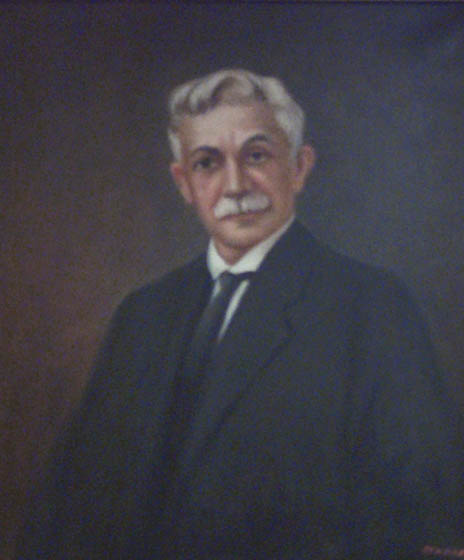 Frederick Sasscer was born 4 March 1856 in Upper Marlboro, son of Dr. Frederick Sasscer and Rosalie Ghiselin. Educated at St. John’s College in Annapolis, he served for a short time as principal of the Marlboro Academy, studied law, and was admitted to the Marlboro bar. The majority of his time was devoted to education, writing and publishing. From 1882 to his death in 1929, he served as Editor of the Prince George’s Enquirer and the Enquirer Gazette which superseded it. From 1902 to 1914, Mr. Sasscer served as Superintendent of the Prince George’s County Schools. He was a highly educated and literate man, and his influence in Upper Marlboro and the County was great.
Frederick Sasscer was born 4 March 1856 in Upper Marlboro, son of Dr. Frederick Sasscer and Rosalie Ghiselin. Educated at St. John’s College in Annapolis, he served for a short time as principal of the Marlboro Academy, studied law, and was admitted to the Marlboro bar. The majority of his time was devoted to education, writing and publishing. From 1882 to his death in 1929, he served as Editor of the Prince George’s Enquirer and the Enquirer Gazette which superseded it. From 1902 to 1914, Mr. Sasscer served as Superintendent of the Prince George’s County Schools. He was a highly educated and literate man, and his influence in Upper Marlboro and the County was great.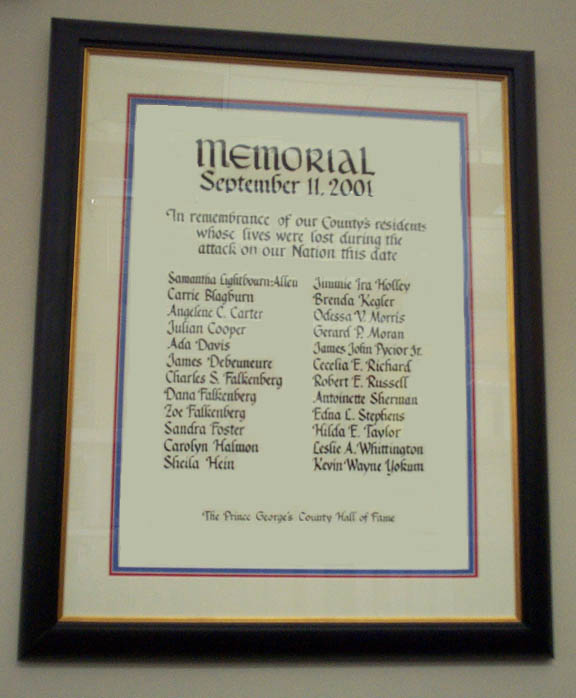 Residents of Prince George’s County who lost their lives as a result of the terrorist attack on Sept. 11, 2001.:
Residents of Prince George’s County who lost their lives as a result of the terrorist attack on Sept. 11, 2001.:
Samantha Lightbourn-Allen, 36, from Forestville
Carrie Blagburn, 48, from Temple Hills
Angelene C. Carter, 51, from Forestville
Julian Cooper, 39, from Springdale
Ada Davis, 57, from Camp Springs
James Debeuneure, 58, from Upper Marlboro
Charles S. Falkenberg (husband of Leslie A. Whittington), 45, and their children Dana, 3, and Zoe, 9, University Park
Sandra Foster, 41, from Clinton
Carolyn Halmon, 49, from Fort Washington
Sheila Hein, 51, from University Park
Jimmie Ira Holley, 54, from Lanham
Brenda Kegler, 49, from Capitol Heights
Gerard P. Moran, 39, from Upper Marlboro
Odessa V. Morris, 54, from Upper Marlboro
James John Pycior, Jr., 39, from Landover
Cecelia E. Richard, 41, from Fort Washington
Robert E. Russell, 52, from Oxon Hill
Antoinette Sherman, 35, from Forest Heights
Edna Stephens, 53, from Capitol Height
Hilda E. Taylor, ~60, from Forestville
Leslie A. Whittington (wife of Charles S. Falenberg), 45, University Park
Kevin Wayne Yokum, 27, from New Carrollton
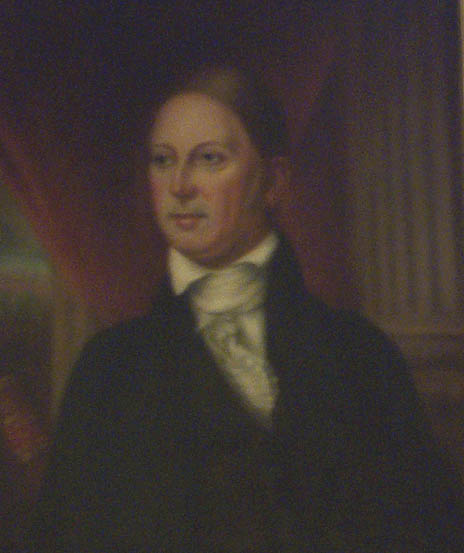 Samuel Sprigg was born circa 1781. When his father, Joseph, died in 1800, he was adopted by his uncle, Osborn Sprigg, and upon the latter’s death in 1815, Samuel inherited his estate, Northampton. He was elected Governor in 1819, 1820, and 1821. An advocate of “internal improvements”, he promoted the establishment of the Chesapeake and Ohio Canal and later acted as president of its board. As Captain, he commanded the local militia company which escorted the Marquis de la Fayette on his 1824 journey through Prince George’s County. Cited as “usefuläuprightäand possessed (of) the unbounded confidence of the community,” Samuel Sprigg died at Northampton, 21 April 1855.
Samuel Sprigg was born circa 1781. When his father, Joseph, died in 1800, he was adopted by his uncle, Osborn Sprigg, and upon the latter’s death in 1815, Samuel inherited his estate, Northampton. He was elected Governor in 1819, 1820, and 1821. An advocate of “internal improvements”, he promoted the establishment of the Chesapeake and Ohio Canal and later acted as president of its board. As Captain, he commanded the local militia company which escorted the Marquis de la Fayette on his 1824 journey through Prince George’s County. Cited as “usefuläuprightäand possessed (of) the unbounded confidence of the community,” Samuel Sprigg died at Northampton, 21 April 1855.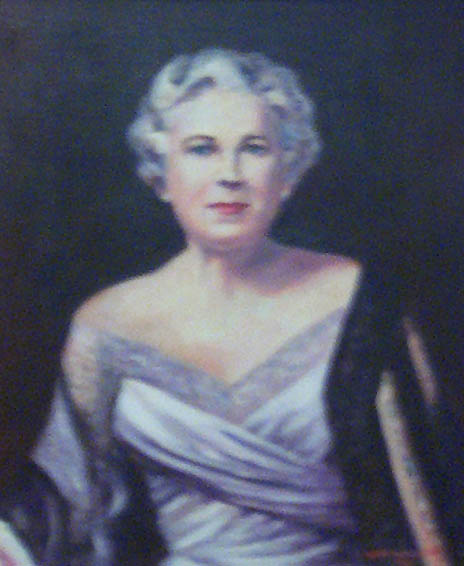 Adele Hagner Stamp was the first dean of women at the University of Maryland, College Park. She was born in 1893 in Catonsville, Maryland, and earned a bachelor’s degree from Tulane University. In 1922 she accepted the post of Dean of Women at the University of Maryland, following the admission of the first female students. During her first years in this position she earned a master’s degree in sociology and recreation from the University of Maryland. As dean, she organized the first Women’s Student Government Association and several Women’s Honor Societies; she was also active with the American Association of University Women (AAUW) both locally and nationally. A leader in the League of Women Voters, she attended Democratic national conventions as a member of Maryland’s delegation. Before her retirement in 1960, she was described as “a daughter of Maryland who by her vision and faith in the potential powers of women has been an inspiration to them to achieve their best in the service of others.” Adele Stamp died in 1974, and in 1983 the University honored her by naming its student union building in her honor. She was inducted into the Maryland Women’s Hall of Fame in 1990.
Adele Hagner Stamp was the first dean of women at the University of Maryland, College Park. She was born in 1893 in Catonsville, Maryland, and earned a bachelor’s degree from Tulane University. In 1922 she accepted the post of Dean of Women at the University of Maryland, following the admission of the first female students. During her first years in this position she earned a master’s degree in sociology and recreation from the University of Maryland. As dean, she organized the first Women’s Student Government Association and several Women’s Honor Societies; she was also active with the American Association of University Women (AAUW) both locally and nationally. A leader in the League of Women Voters, she attended Democratic national conventions as a member of Maryland’s delegation. Before her retirement in 1960, she was described as “a daughter of Maryland who by her vision and faith in the potential powers of women has been an inspiration to them to achieve their best in the service of others.” Adele Stamp died in 1974, and in 1983 the University honored her by naming its student union building in her honor. She was inducted into the Maryland Women’s Hall of Fame in 1990.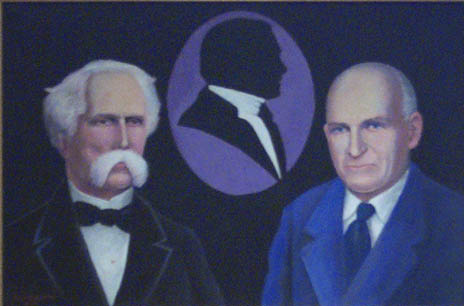 To celebrate the 1996 Tricentennial of Prince George’s County and to recognize the important role of agriculture in the County’s history, the Hall of Fame inducted three agricultural scientists. Representing the eighteenth century is Dr. Richard Brooke (1716-1783), a physician and planter who published his meteorological research, the first known instrumental observations of air temperature and wind direction in Maryland. Representing the nineteenth century is General Horace Capron (1804-1885), who established and managed a cotton factory in Laurel, but was widely known as a progressive farmer; after serving as a U.S. Commissioner of Agriculture (1867-1871), he worked as an advisor in Hokkaido and revolutionized the farming of Japan. And representing the twentieth century is Dr. George M. Darrow (1889-1983), best known for his hybridization and breeding of the Glenn Dale Strawberry; his research was an important factor in the growth of the world’s largest and most diversified agricultural complex, the Beltsville Agricultural Research Center. (bio on USDA site)
To celebrate the 1996 Tricentennial of Prince George’s County and to recognize the important role of agriculture in the County’s history, the Hall of Fame inducted three agricultural scientists. Representing the eighteenth century is Dr. Richard Brooke (1716-1783), a physician and planter who published his meteorological research, the first known instrumental observations of air temperature and wind direction in Maryland. Representing the nineteenth century is General Horace Capron (1804-1885), who established and managed a cotton factory in Laurel, but was widely known as a progressive farmer; after serving as a U.S. Commissioner of Agriculture (1867-1871), he worked as an advisor in Hokkaido and revolutionized the farming of Japan. And representing the twentieth century is Dr. George M. Darrow (1889-1983), best known for his hybridization and breeding of the Glenn Dale Strawberry; his research was an important factor in the growth of the world’s largest and most diversified agricultural complex, the Beltsville Agricultural Research Center. (bio on USDA site)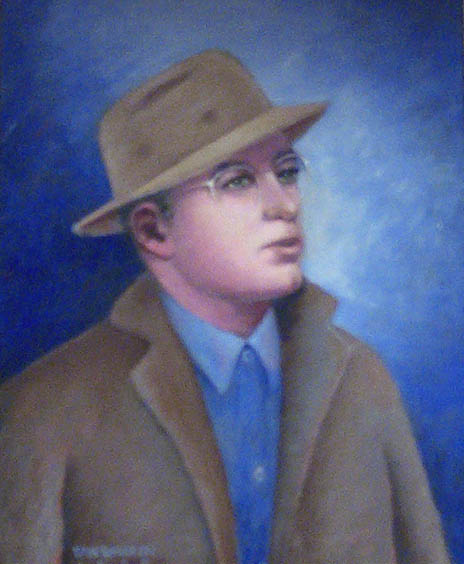 Dr. Zahnister did more than any one person to implant the idea of “wilderness” in the American consciousness. Serving as executive director of the Wilderness Society, he changed the direction of the wilderness movement from a defensive posture which fought development projects whenever they arose, to a positive movement seeking to preserve wild lands. He was author, lobbyist and full-time promoter of the bill that became the Wilderness Act. It was signed into the law on September 3, 1964. He lived and worked in Hyattsville from World War II until his death in June, 1964.
Dr. Zahnister did more than any one person to implant the idea of “wilderness” in the American consciousness. Serving as executive director of the Wilderness Society, he changed the direction of the wilderness movement from a defensive posture which fought development projects whenever they arose, to a positive movement seeking to preserve wild lands. He was author, lobbyist and full-time promoter of the bill that became the Wilderness Act. It was signed into the law on September 3, 1964. He lived and worked in Hyattsville from World War II until his death in June, 1964.Board of Directors – The Hall of Fame
Prince George’s County, Maryland, Inc.
| Jack BidezCynthia
HeerwagenChesleyRobert Crawley, Jr.W.C. Dutton, Jr.Robert L. GoughJean Hahn |
Peter Herring Forrest S, Holmes, Jr. John Mitchell Ralph Powers, Jr. Barbara Sikora Win Warren |
